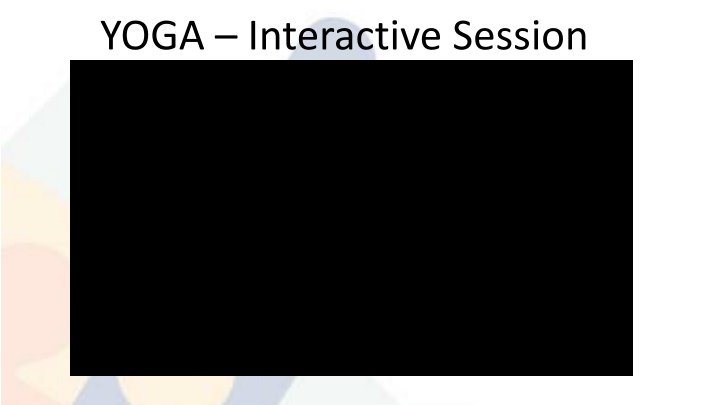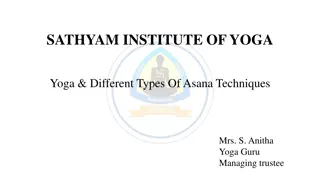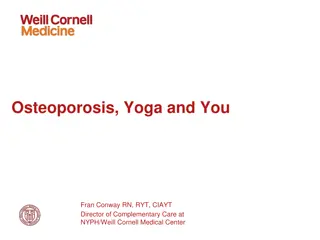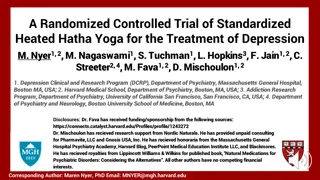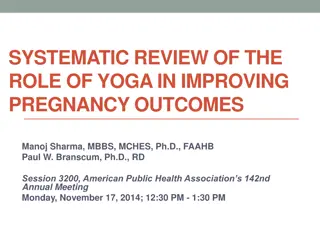Yoga Interactive Session Learning Objectives and Practices
Explore the signs of compassion fatigue in the healthcare setting, learn yoga-based breathing techniques and meditation, practice yoga poses for stress relief and balance, and understand the importance of healing the healer. The session aims to equip participants with tools to identify, address, and prevent compassion fatigue while promoting self-care and holistic well-being.
Download Presentation

Please find below an Image/Link to download the presentation.
The content on the website is provided AS IS for your information and personal use only. It may not be sold, licensed, or shared on other websites without obtaining consent from the author.If you encounter any issues during the download, it is possible that the publisher has removed the file from their server.
You are allowed to download the files provided on this website for personal or commercial use, subject to the condition that they are used lawfully. All files are the property of their respective owners.
The content on the website is provided AS IS for your information and personal use only. It may not be sold, licensed, or shared on other websites without obtaining consent from the author.
E N D
Presentation Transcript
Learning Objectives Learning Objectives At the end of this presentation, participants will be able to: 1. Identify the signs of compassion fatigue in the health care setting 2. Implement yoga based breathing techniques and meditation 3. Practice 3 yoga poses for stress relief and balancing mind body and spirit
Warning signs of compassion fatigue Abusing drugs, alcohol or food High self-expectations Anger Hopelessness Hypertension Blaming Inability to maintain balance of empathy and objectivity Chronic lateness Increased irritability Depression Less ability to feel joy Low self-esteem Diminished sense of personal accomplishment Sleep disturbances Exhaustion (physical or emotional) Workaholism Frequent headaches Gastrointestinal complaints When practicing medicine feels more like labor than a labor of love, take steps to heal the healer. John-Henry Pfifferling, PhD, and Kay Gilley, MS Fam Pract Manag. 2000 Apr;7(4):39-44.
Restorative Seated Cat-Cow Pose Upavistha Bitilasana Marjaryasana
Mountain Pose Tadasana
Tree Pose Vrksasana
Session Evaluation and Outcome Assessment These short forms serve important functions! For speakers: Your responses help them understand their strengths and weaknesses, participant learning needs, and teaching outcomes For the CEPD office: To plan future programs For quality assurance and improvement To demonstrate compliance with national accreditation requirements For YOU: Reflecting on what you ve learned and how you plan to apply it can help you enact change as you return to your professional duties Please take 3-5 minutes to fill the evaluation form out. Thank you!
